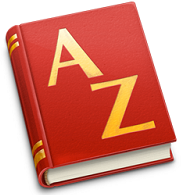| HICtionary | Arabic HICtionary |
 HICtionary
of Key Habitat Terms
HICtionary
of Key Habitat Terms
|
Browse our HICtionary Alphabetically
| A B C D E F G H I J L M N O P R S T U V W Z |
|
|
|
Over the last decade since Rio+20, the green economy vision responsed to the need for traditional economic models to be reformed, in order to address climate change, biodiversity losses, water scarcity and the depletion of other finite resources, while also addressing key social and economic challenges. Then, in 2015, the UN adopted the 2030 Agenda for Sustainable Development and its 17 SDGs. The goals recognize that ending world poverty must align with strategies that build economic growth, but also address a range of various social needs including education, health, social protection, housing and job creation, while tackling environmental pollution and climate change. The resulting Sustainable Development Goals (SDGs), thus, also recognize and affirm the nexus between the ecological system and the economic system (SDG13). They also reinforce the need for a transition to a green economy, including a fundamental transformation toward more responsible and, to fill a gap in Rio+20, sustainable modes of production and consumption (SDG12), including the development of circular economies. In 2015, all multilateral development institutions agreed on the SDGs as a common set of objectives. The COVID-19 pandemic introduced a new level of urgency. Meanwhile, the resulting economic slowdown and other simultaneous crises have done little to slow the climate crisis. Preliminary data show global greenhouse gas emissions (GHGE) actually increased in 2020, and ever further in 2021. The global average temperature in 2020 was about 1.2°C above pre-industrial level, dangerously close to the 1.5°C limit called for in the Paris Agreement. The world also fell short of its 2020 targets to halt biodiversity loss, while 10 million hectares of forest have been lost annually between 2015-2020. In response to this convergence of “the three planetary crises: the climate crisis, the biodiversity crisis, and the pollution crisis,” the Green Economy Transition (GET) emerged as a term synonymous with a new approach to international cooperation and assistance introduced by the European Bank for Reconstruction and Development (EBRD) to help economies where the EBRD works to build green, low carbon and resilient economies. This approach and the term itself reflect the cumulative thinking and lessons learned over the decade since the broader “green economy” was introduce into global development policy at Rio+20. It is a more-comprehensive approach to development in complex crises and reflects the timely forward thinking of the COVID-19 pandemic era. However, these challenges also coincide with the crisis of global finance and the greatest disparity in wealth distribution for a century, the crisis of population growth (unaddressed in global policy processes since 1994), the crisis of armed conflict and occupations, and the related crisis of human displacement. These additional dimensions of global crisis remain apart from the green-transition objectives. |












